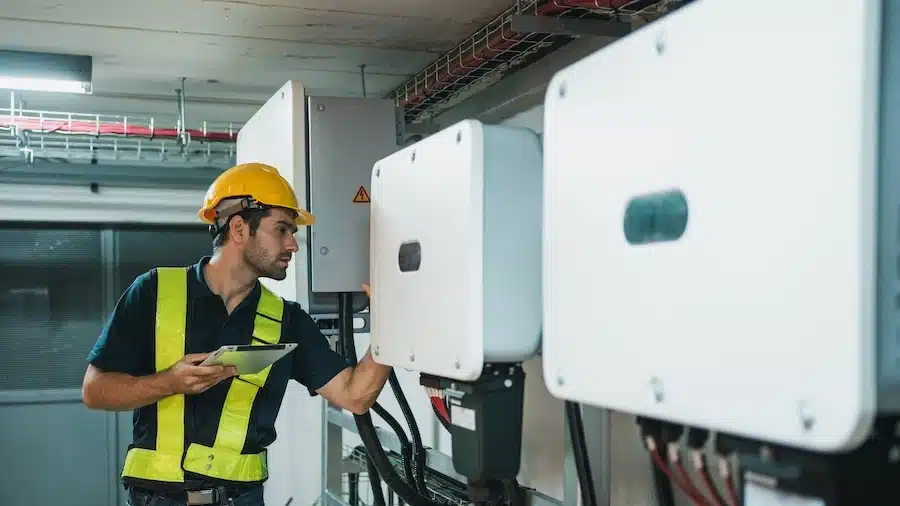In our Specialist Spotlight series we explore the lives–professional and personal–of the GrantTree tax, technical and grants specialists connecting your organisation with non-equity funding. In this edition we’re talking to Emily Siddaway-Parmenter, MEng, senior R&D technical consultant and built environment expert. Emily talks about her experiences in industry, her hopes for the future of sustainability in civil engineering, and her passion for mentoring other women in engineering.
Hi Emily. First off, could you tell us a bit about what R&D technical consultants do and why expertise is so important to companies claiming R&D Tax Relief?
Thank you for having me! In a nutshell, an R&D technical consultant is someone who has both a technical background (i.e. a background in science, engineering, software development, and so on) and an in-depth understanding of the R&D Tax Relief scheme.
We use this combination of knowledge to assess what aspects of a company’s R&D qualify for relief and then explain the R&D in terms HMRC’s inspectors –most of whom aren’t technical–can understand.
Technical expertise is vital to this work. My colleagues and I need to have in-depth conversations with our clients to uncover the information HMRC requires to see that a projects satisfies the guidelines separating qualifying and non-qualifying work. We couldn’t have these conversations without an excellent grasp of science and technology.
This work has become even more important now that all companies are required to submit an additional information form (AIF) alongside their claim, containing detailed technical breakdowns of their projects.
Before joining GrantTree you spent four years as an R&D technical consultant at Deloitte. How have you found the transition?
Culturally, there have been some big changes. Everything is very formal in a Big Four accountancy, whereas at GrantTree, everyone just brings their true selves to work!
For someone like me who is neurodiverse (and doesn’t always understand the unspoken corporate rules), this is very refreshing and has meant that I have settled into the team very well.
The interaction with clients is very different, too. At GrantTree, I speak directly to the founders of companies about their innovation and get to truly know the people who work there.
"The interaction with clients is very different, too. At GrantTree, I speak directly to the founders of companies about their innovation and get to truly know the people who work there."
Before Deloitte, you spent eight years at Galliford Try, including two as a research and development engineer. What does a research and development engineer do?
The role was really varied. I was very lucky to have an amazing boss who knew me well enough to let me direct my areas of research.
Having worked onsite for six years, my main focus was improving working conditions for site operatives, specifically the impact of working at night and the climate impact of site accommodation.
I also worked to deliver the company’s R&D Tax Credit claim. This meant speaking to sites about the R&D they were undertaking. It was fascinating just how much goes on in the normal course of construction.
Many companies in the built environment operate on razor-thin margins. Does this affected their appetite for R&D, given the associated costs and risks?
Yes, it’s true that margins in the built environment space are being squeezed tighter and tighter.
This, coupled with pressures like new building regulations, increased sustainability and he lack of skilled resource are all driving companies to innovate. This is stimulating a lot of R&D which qualifies for funding through the R&D Tax Relief scheme.
Never miss an opportunity
Stay up to date with the latest funding and innovation news from GrantTree by
signing up for GrantTree’s newsletter.
You have a master’s in civil engineering and sustainability. What areas of civil engineering R&D do you find most exciting from a sustainability standpoint?
The need to achieve net zero by 2050 is a big one for me.
There is a lot of embedded carbon and waste generated in the built environment sector. Seeing how companies mitigate this with new and exciting technologies is a really fascinating part of my job, particularly when I get to talk to people who are just as concerned about it and as passionate about it as I am.
Nerding-out with my clients’ technical people over their R&D is one of the things I love most about my job, as is seeing the results of their work in the real world.
Large infrastructure projects, like HS2, have been a massive driver, but smaller projects have just as much impact, too (and more on the scale of which they are undertaken!).
"Nerding-out with my clients' technical people over their R&D is one of the things I love most about my job, as is seeing the results of their work in the real world."
You mentor female engineers through the Women in Brunel Engineering and Computing scheme, and at university, you co-founded the Women in STEM and Design Society. What inspired your passion for supporting other women in STEM fields?
I was the first female at my secondary school to study double GCSE engineering, and the first student to achieve a double A grade in the course in my school’s history. It was a really isolating experience, which continued when I studied my BTEC in construction (there were just two other women in a class of 35), and when I got to my degree (10 in a class of 110).
I don’t believe that your gender should hold you back. By creating a support network and mentoring young women, who will become our next generation of bright, enthusiastic and passionate engineers, we can come up with solutions to engineering problems that haven’t been thought of before.
Statistically, a team has more success the more diverse it is, and in a skills shortage, why would we detract women from careers where they can form 50% or more of the workforce?
I was also a mentee on the scheme, and I massively benefited from my mentors guidance. I’ve been really lucky to have five fabulous and amazing young women to mentor, and I’m super proud of all they have accomplished and worked for.
"Statistically, a team has more success the more diverse it is, and in a skills shortage, why would we detract women from careers where they can form 50% or more of the workforce?"
And finally, you’ve visited an impressive 27 US states! I’m sure many Americans haven’t explored their own country half as well as you have. What unusual or off-the-beaten-track place would you most recommend to travellers looking to avoid the typical tourist hotspots?
My husband and I love to travel the US as it really is built for recreation. Each state has its own identity and culture.
However, my favourite state has to be Arizona. I love Mexican cuisine, and this is the best I’ve found outside of Mexico. The scenery is also otherworldly – endless forests of Cacti and red rock desert just line the highways, and it is a true wilderness in places, making hiking and exploring the outdoors even more fun.
The heat also helps – I’m always cold in the UK so the scorching temperatures are right up my alley!




